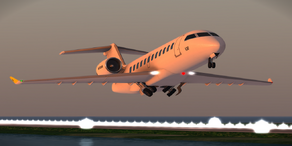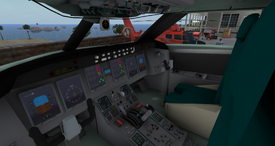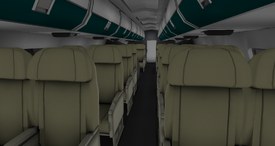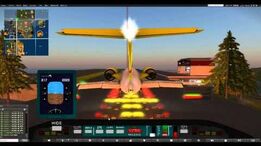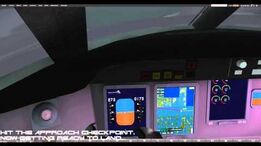The Bombardier CRJ-700 or CRJ700 (ICAO: CRJ7 / WAKE: MEDIUM) is a mid-size cabin, business jet aircraft. The Second Life replica was created as part of a joint project by Forbidden Industries, Husky Aviation, Laminar Systems, Shergood Aviation, and ZSK Digital Designs. It was based on the real-life Bombardier CRJ-700, manufactured by Bombardier Aerospace.
Background
Brought into service in 2001, the real-life CRJ-700 is an upgraded version of the CRJ-100/200 which were derived from the challenger business jet. The aircraft was stretched longer for greater seating capacity, received an upgraded engine, landing gear, and flight systems. The aircraft itself is still in service today mainly used for regional routes, unloading and reloading passengers and baggage across destinations in short periods of time.
The product of months of collaboration between four Second Life manufacturers, the CRJ-700 was intended to closely replicate the experience of operating a regional jet airliner within the limitations of Second life. The aircraft features a pilot's heads-up display (HUD), working cockpit instrumentation, built in transponder, global positioning system, animated doors, folding landing gear, moving control surfaces, independent engine start-up, passenger media displays, and interior/exterior lighting.
Features
- Pilot's heads-up display (HUD) attachment with:
- Toggles for displays.
- Flaps, spoilers, parking brakes, and landing gear switches.
- Lighting switches.
- Warning lights.
- Options menu switch.
- Working cockpit instruments:
- Main function display (MFD) with artificial horizon, airspeed, altitude, vertical speed, and heading indicators.
- Global Positioning System (GPS) with animated map, transponder, and call-sign setting.
- Display with throttle, compressor, landing gear, flaps and spoilers indicators.
- Compass.
- Artificial horizon backup.
- Laminar flight engine (LFE) physics with spoilers, flaps, realistic momentum and breaking.
- Exterior lighting (landing light, logo lights, taxi light, navigation lights, strobes, and beacon).
- Interior lighting (Seatbelt signs, smoking signs, panel, and cockpit).
- Individual passenger media screens.
- Animated components (displays, control surfaces, landing gear, engines, doors etc.).
- Independent engine start-up.
- Built-in pushback system.
- Optional simulated damage (engine damage) - planned for future update.
- Fully modifiable and customizable.

